There are many key indicators for measuring the quality of an oscilloscope testing system, and the “Effective Number of Bits (ENOB)” is crucial for understanding the entire measurement system. This article will discuss the effective bits of oscilloscopes, the impact of ENOB on actual signal testing, and provide methods for solving it using EXCEL in practical applications.
1
Introduction

Figure 1: Structure of Digital Oscilloscope System
From the structure of the digital oscilloscope system in Figure 1, it can be seen that the signal enters the oscilloscope through the probe system, is conditioned by the attenuator and preamplifier, and then enters the ADC. The attenuation circuit and amplifier work in coordination through relays, allowing for quick switching when adjusting vertical resolution. There are many parameters that measure the performance of the ADC, such as sampling rate, DNL, INL, signal-to-noise ratio, and effective bits. This article mainly discusses the effective bit indicators of the ADC and the effective bits of the oscilloscope system.
2
Definition of ADC Effective Bits
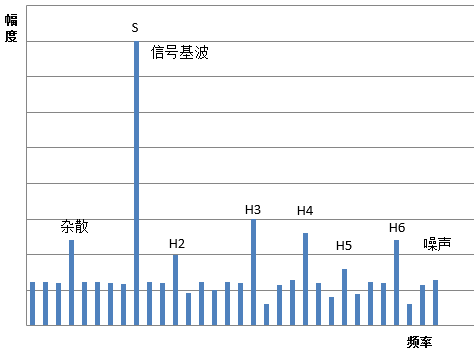
Figure 2: Frequency Domain Distribution of Sine Wave Collected by ADC
The effective bit indicator of the ADC is indirectly calculated through FFT spectral analysis of the sine wave signal. Figure 2 shows the frequency domain distribution obtained from the sine wave after AD sampling and FFT transformation. In addition to the main sine wave component, there are also many noise, harmonics, and spurious signals.
The effective bits of the ADC are defined as:
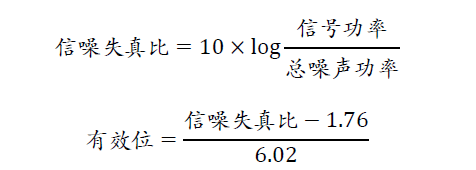
Where: 1.76 is the quantization noise of an ideal ADC;
6.02 is the coefficient for converting log2 to log10.
3
Effective Bits ENOB of Oscilloscopes
The ENOB parameter is widely accepted in the industry as a general indicator for determining the performance of A/D conversion, oscilloscope systems, or other digital systems. Various errors exist in all digital systems, which can cause deviations between the voltage obtained by the system and the “ideal” voltage. For an ideal oscilloscope system, the effective number of bits should match the A/D conversion resolution within the maximum input bandwidth range. In reality, no instrument can be ideal, and the ENOB is usually lower than its A/D conversion resolution.
As seen in the digital oscilloscope system architecture in Figure 1, the front-end acquisition circuit and ADC sampling circuit have a significant impact on ENOB. During actual operation, bias errors, non-linear errors, gain errors, random noise, and noise caused by ADC interleaving all affect ENOB.
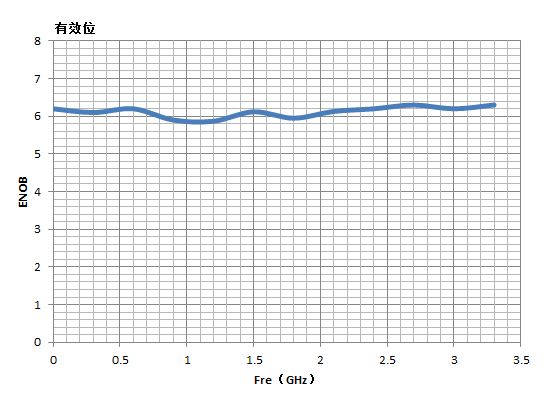
Figure 3: ENOB Curve of Oscilloscope
4
Impact of ENOB on Actual Signal Measurement
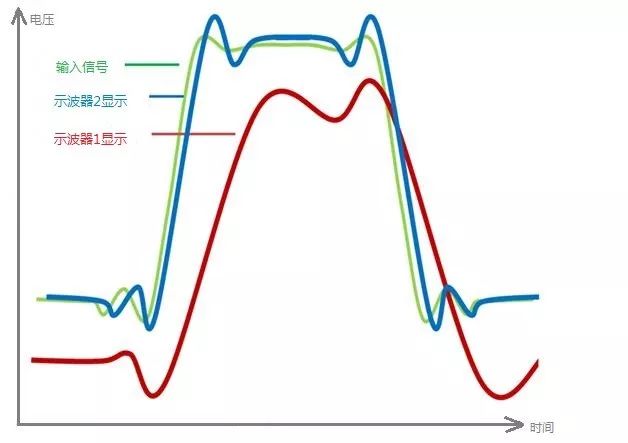
Figure 4: Two Oscilloscopes Measuring the Same Signal
-
When the ENOB indicator of the oscilloscope is good, the time error and frequency spurious (usually caused by stitching errors) are relatively small, and the broadband noise is also low;
-
ENOB does not consider phase inconsistency and frequency response distortion;
Ideally, all oscilloscopes should have flat phase and frequency response curves and the same roll-off characteristics. However, in practice, phase and frequency response curves are generally not found in oscilloscope specification manuals, and ENOB also does not consider frequency response flatness or phase inconsistency. Figure 4 shows the measurement results of an input signal on two different oscilloscopes. Both oscilloscopes have the same ENOB, but the waveform displayed by oscilloscope 1 is much closer to the actual input signal, while the waveform displayed by oscilloscope 2 is significantly distorted.
-
ENOB does not account for the bias errors that the oscilloscope may introduce.
Two oscilloscopes with the same ENOB may display waveforms that look identical, but the absolute voltage offsets may differ. For this, measuring the oscilloscope’s baseline noise under different offsets or evaluating the DC gain indicators can provide a better assessment method.
5
Measurement of Oscilloscope ENOB
Measuring the ENOB of an oscilloscope requires considering the following factors:
-
The ENOB of the test source must be greater than that of the oscilloscope being tested;
-
Whether the measured signal fills the oscilloscope’s range will affect the ENOB test results;
-
The frequency of the measured signal relative to the oscilloscope’s sampling rate will affect the ENOB test results. This is crucial, and the following conditions must be met during actual testing. (For details, click to view previous WeChat articles: “Don’t Miss Out! These FFT Insights Are Really Useful“)

Where:
n: prime number;
N: number of FFT analysis points, taken as 4096 points here;
Fs: oscilloscope sampling rate;
Fin: frequency of the measured signal.
Based on the above points, the general idea and related steps for measuring the ENOB of an oscilloscope are as follows:
1. Set the oscilloscope to appropriate vertical range, time base, storage depth, and sampling rate. The sampling rate can be adjusted by changing the time base and storage depth.
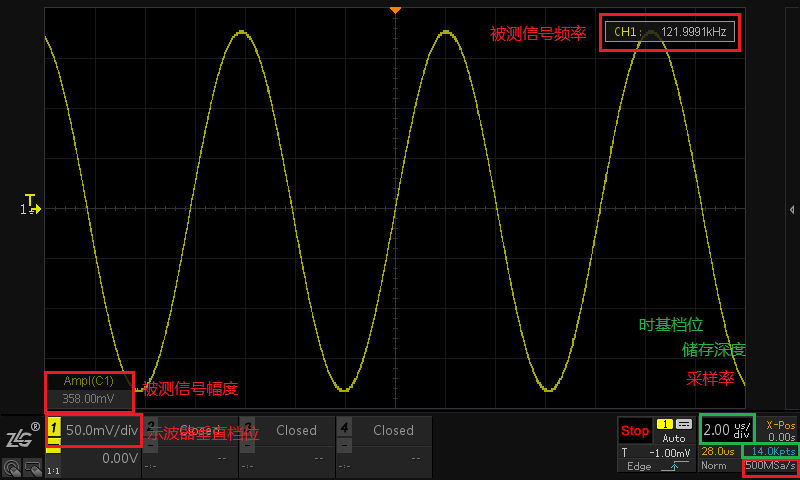
Figure 5: Screenshot of Oscilloscope ENOB Test
2. Export the data report as an .SCV file.
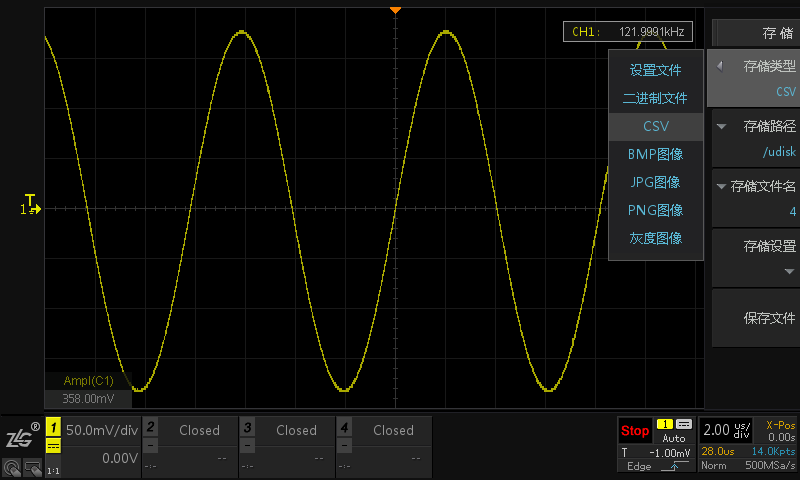
Figure 6: Oscilloscope Exporting .SCV File
3. Use EXCEL to perform a Fourier transform on the data and calculate the ENOB.
Note: EXCEL template Baidu Cloud link:
https://pan.baidu.com/s/1ciUuB3oKfco-10QkR4o3TA
Extraction code: x8i5
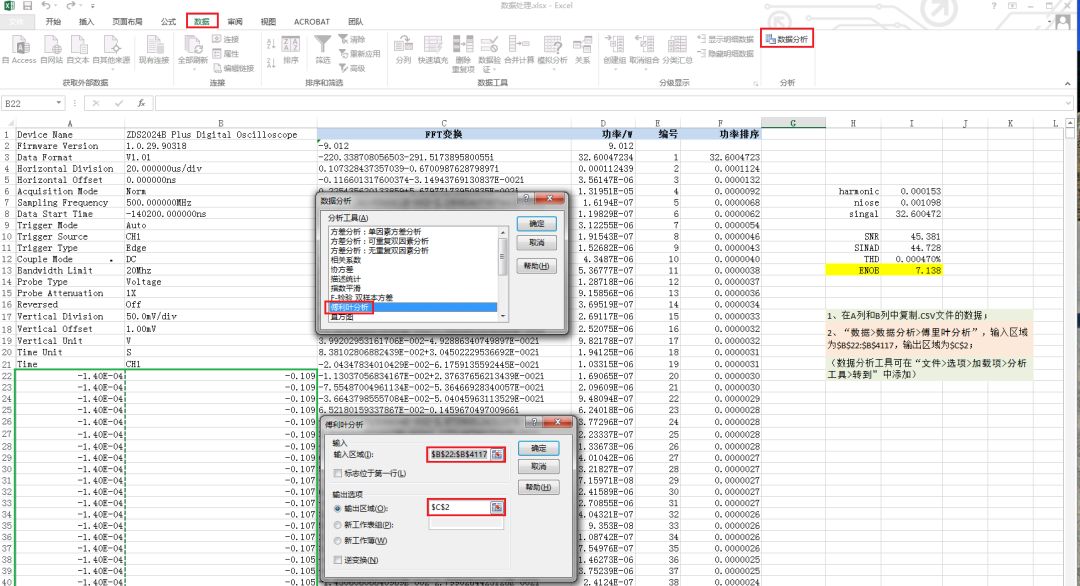
Figure 7: EXCEL Processing Data to Solve ENOB
Under different amplitudes and frequencies of the measured signal, use EXCEL to process the data to solve for the oscilloscope ENOB. The results are shown in Figure 8. Although the ZDS2020B Plus uses an 8-bit ADC, due to the influence of the measured signal amplitude, the actual measured ENOB cannot reach the ideal state.
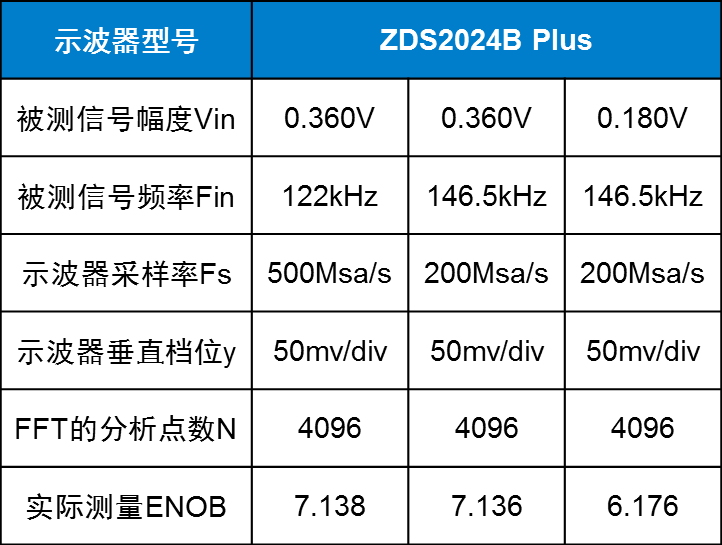
Figure 8: Oscilloscope ENOB Record Table
6
Conclusion
ENOB is one of the indicators for measuring the performance of ADC in oscilloscopes, but a higher ENOB is not a necessary condition for the oscilloscope to accurately reproduce the input signal. This mainly depends on what signal is being measured and whether ENOB will affect the measurement results. In practical applications, the following points can be used to improve the ENOB of the oscilloscope to achieve higher measurement accuracy:
-
Select bandwidth-limiting filters for the oscilloscope to suppress high-frequency components such as interleaving errors and noise, thereby achieving a higher ENOB;
-
When measuring repetitive or low-frequency signals, use averaging or high-resolution acquisition modes to reduce broadband noise; using these modes comprehensively can effectively achieve higher precision measurements;
-
Select an appropriate vertical range, generally keeping the waveform occupying 80% to 90% of the screen.

Figure 9: EXCEL File Link
If you have any questions, you can: 1. Add Xiao Z’s WeChat ID: zlgmcu-888 2. Call the official technical hotline of ZLG Zhiyuan Electronics: 400-888-4005.
ZLG Zhiyuan Electronics Introduction
Guangzhou Zhiyuan Electronics Co., Ltd. is a subsidiary of Guangzhou Zhiyuan Electronics Co., Ltd., founded in 2001 by the renowned embedded system expert Professor Zhou Ligong. It is a national high-tech certified enterprise and the Guangdong Provincial Engineering Technology Research and Development Center for high-end industrial control measurement instruments.
Strategy:Industrial Intelligent IoT Ecosystem
ZLG designs high value-added modules, boards, and high-end measurement instruments from “chip” to “cloud” using “chip + AWorks software platform + artificial intelligence”. Through wired and wireless methods, they connect to the ZWS (ZLG Web Service) IoT cloud for big data processing, building an industrial intelligent IoT ecosystem.
Values:Professionalism and Focus Achieve Dreams
Focusing resources and concentrating on the development strategy of the industrial intelligent IoT ecosystem to achieve dreams.
Corporate Culture:Common Struggle, Shared Benefits, Mutual Achievement
Implementing the “Climbing Plan” to build a growth mechanism for talent; implementing the “Partner Co-entrepreneurship and Benefit Sharing” plan to create a vibrant and positive team.